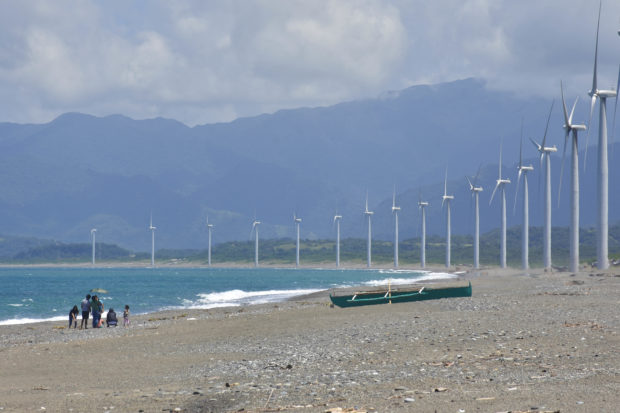
WIND POWER Ilocos Norte has opened its borders to leisure travelers, allowing tourists to visit the province’s heritage sites, beaches and outdoor attractions, like the scenic wind farm in Bangui town, subject to health protocols. The provincial government says its COVID-19 cases have been dropping, prompting officials to resume tourism activities. —WILLIE LOMIBAO
LAOAG CITY, Ilocos Norte, Philippines — With quarantine curbs eased, Ilocos Norte on Monday reopened its borders to welcome back leisure travelers from the rest of the country.
At a press briefing, Gov. Matthew Marcos Manotoc said the province’s reopening to travelers from its top tourist markets, like Metro Manila, would jump-start the recovery of the tourism industry that was badly hit by the pandemic.
This came as Ilocos Norte received a “safe travel” stamp from the World Tourism Council and the Department of Tourism for being compliant with safe travel protocols and other requirements.
“The stamp solidifies [the province’s] pride as a safe and fun destination, and a big boost to the tourism sector,” the Ilocos Norte tourism office said in a recent statement.
Based on local guidelines, tourists coming from areas under COVID-19 Alert Level 4 are required to present negative reverse transcription-polymerase chain reaction (RT-PCR) test results taken within 72 hours before their travel regardless of their vaccination status.
Tourists may present negative rapid antigen test results taken within 24 hours before traveling to the province in place of RT-PCR test results.
A negative antigen test result is also required for those coming from areas under general community quarantine (GCQ) or modified GCQ areas, the two least restrictive quarantine classification, and those under Alert Levels 1, 2, and 3.
Losses
Before the pandemic, the province had been attracting about 2.1 million tourists annually during the peak season between January and May.
About P17.8 billion in potential revenues from the local tourism sector was lost because of the travel restrictions, the provincial government said.
It said the province had seen a downtrend in its weekly recorded average of new COVID-19 cases, as it plateaued from 273.6 cases between Aug. 6 and Aug. 13 to 73.7 cases from Sept. 17 to Sept. 24.
With an economy that is heavily reliant on tourism income, the province has been trying to ramp up its vaccination efforts among tourism workers, with at least 1,900 tourism getting inoculated since July, according to local data.

